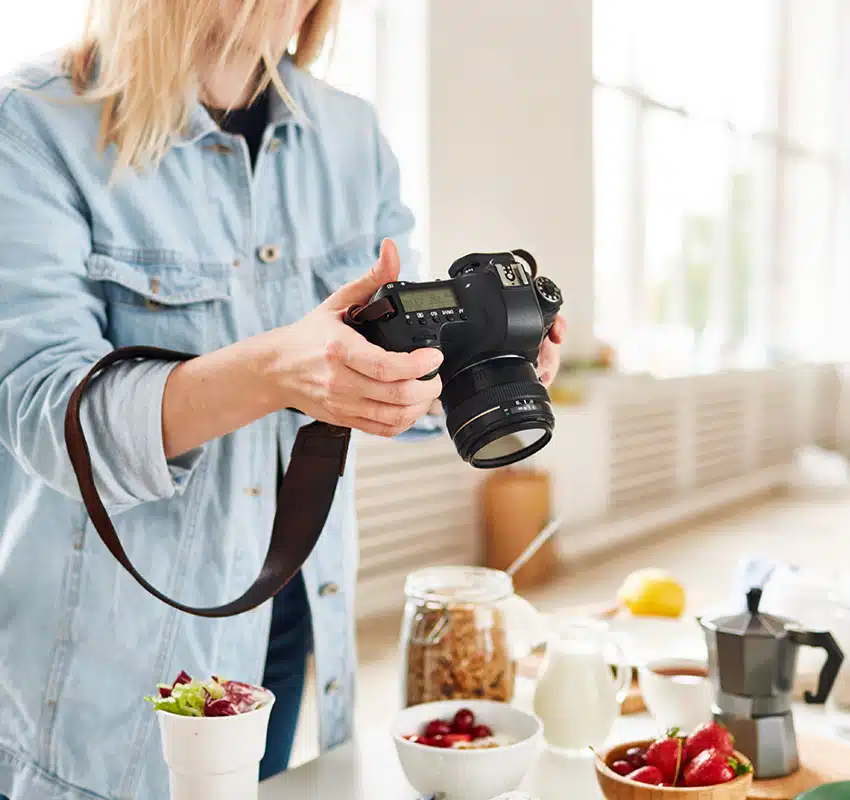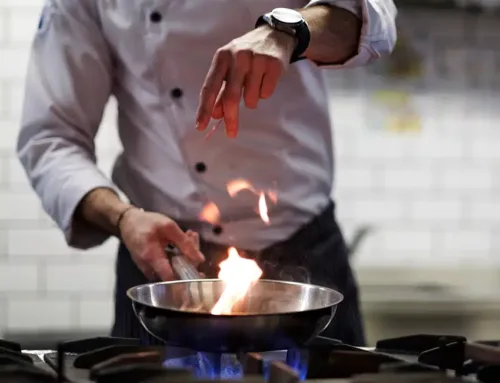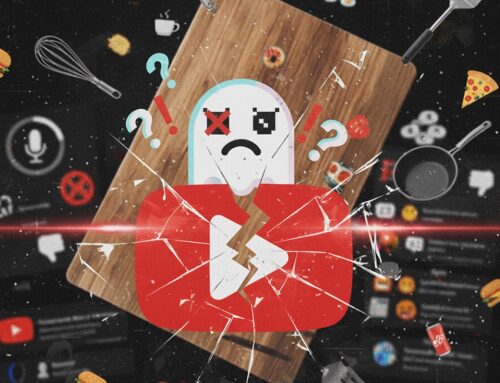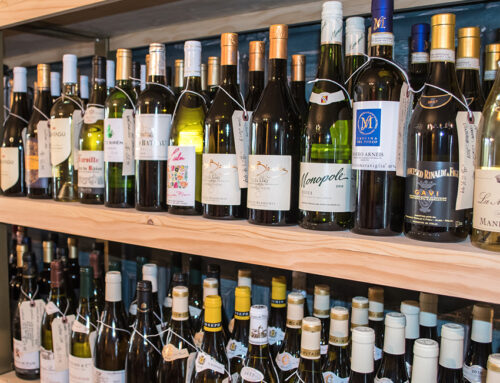The Food Advertising Tricks used by Food Stylists and Food Photographers
Every time you watch a food commercial, it is easy to feel hungry shortly after. The cuisine on screen looks like the epitome of deliciousness, crafted to trigger appetite and desire. Food Advertising presents food products in exciting, mouthwatering ways designed to urge consumers to buy. Food advertisements are strategically designed to maximize market impact and engage target audiences, using effective food marketing techniques to enhance brand influence. There are several techniques food advertising agencies do to improve the food products and entice consumers, particularly in what you see on your smartphone or TV.
Whilst Gourmet Ads does not develop advertising creative, our team has been involved in multiple food photo and food styling projects for advertising campaigns over the years. The food might look appetising on camera, but much of it is inedible by the time the lights and tools of food photography have done their job. These visuals rely on careful planning and proven food advertising tricks that transform real ingredients into picture perfect hero products.
A professional food ad set can be surprisingly busy. There is often a food stylist shaping every ingredient, a specialist food photographer focused on colour and texture, a producer running the schedule, sometimes a chef preparing components behind the scenes, and on many occasions the client is present to approve every detail. Food coloring is often used by food stylists and food photographers to enhance the visual appeal of food products, making them appear more vibrant and attractive in ads.
It can take an entire day to capture a single frame of food photography that ends up in a food ad. At Gourmet Ads we work with Top Food Marketing Agencies around the world, many of which manage their own studios and food styling teams to create unforgettable food advertising.
Food advertising is everywhere these days from glossy magazine spreads to mouthwatering TV commercials and it’s designed to make us crave what we see. But have you ever wondered why the food in advertisements always looks so perfect, so delicious, and so much more appealing than what ends up on your plate in real life? The secret lies in the hands of skilled food stylists and photographers, who use a toolkit of clever tricks to transform ordinary food products into visual masterpieces.
One of the most common challenges in food advertising is making food look fresh and appetizing under the intense heat of studio lights. Real ice cream, for example, melts in minutes, so food stylists often use mashed potatoes as a stand-in. Mashed potatoes hold their shape and can be tinted to mimic any ice cream flavor, ensuring that every scoop looks picture-perfect throughout a long shoot. Similarly, whipped cream tends to lose its fluffy texture and melt quickly, so shaving cream is often used instead of whipped cream to maintain a consistent thickness and sculpted look.
These are just a few examples of the many tricks used in food advertising to create images that entice consumers and make food products look irresistible. By using creative substitutions and strategic presentation, food stylists turn everyday foods into advertising stars, ensuring that every bite looks as delicious as it tastes—or even better.
The Top 13 Food Advertising Tricks
Here are the most widely used Food Advertising Tricks used to make food look irresistible on camera.
1. Mashed potatoes used in various food products
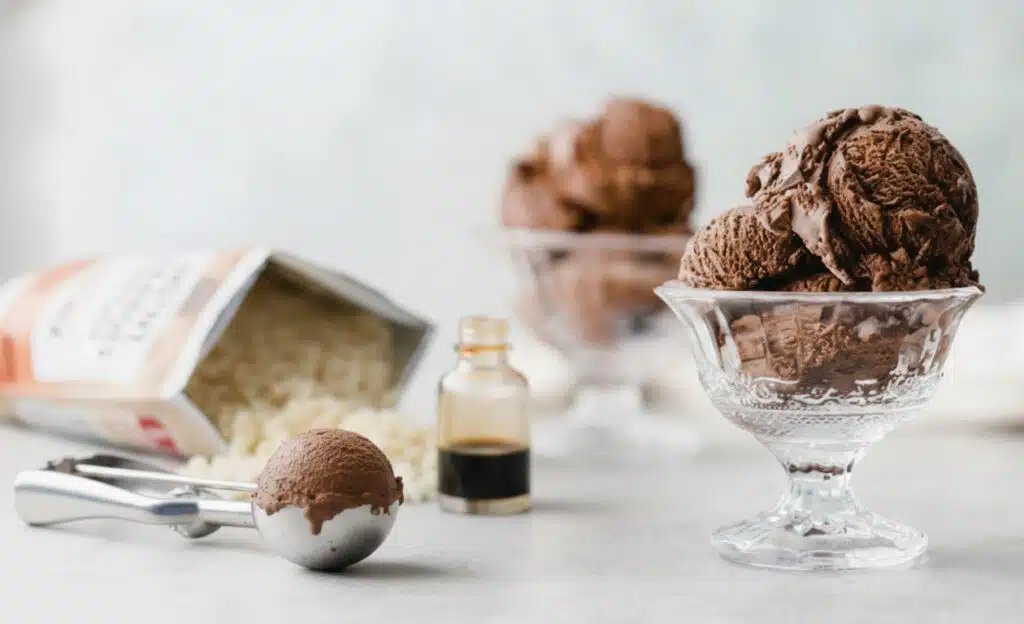
Mashed Potatoes Stand In for Ice Cream
Mashed potatoes are the unsung heroes of advertising photography, they're easy to work with and won't melt to run under hot lights. Over the years advertisers have found a number of ways to use mashed potatoes to make various food products look better on camera. They can be used to add volume to meat products like roasts and whole chickens by injecting them into the desired area. Mashed potatoes are also baked into pies to give the filling a sturdy consistency that won't run when a piece is cut. By far their most popular use in advertising photography is as a stand-in for ice cream. Ice cream is incredibly difficult to photograph especially because it needs to look ice cold, the hot lights used in photography causes it to start melting. Mashed potatoes don't have this problem, adding colors and mix-ins makes the illusion complete and as long as they're the right consistency it's nearly impossible to tell the difference.
2. Glue in Milk
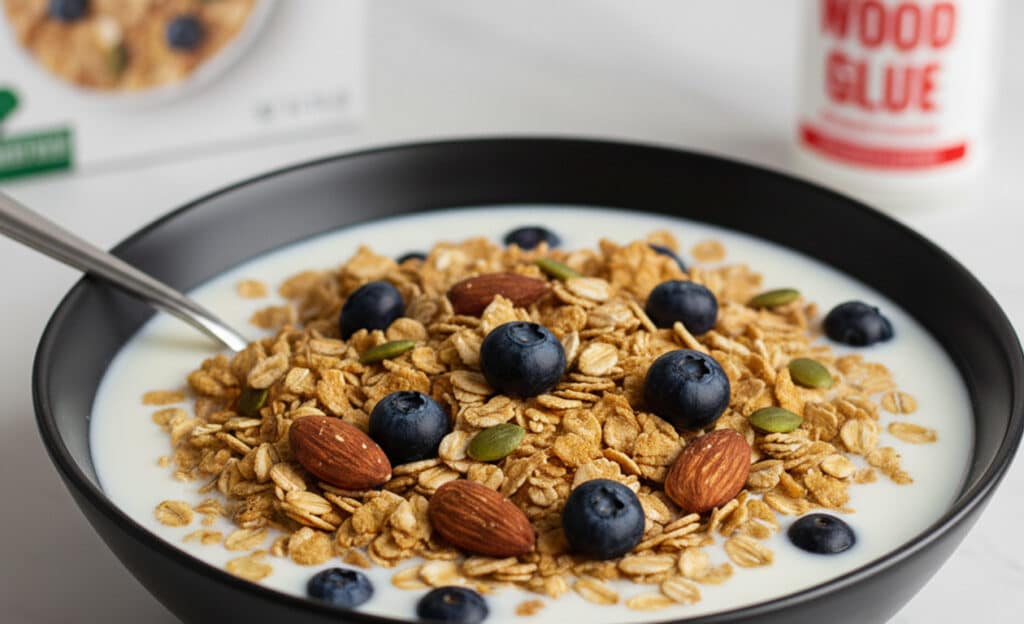
Glue in Milk
Real milk causes cereal to become soggy quickly, which is why food stylists use glue instead of milk in cereal ads. White glue is used instead of milk to maintain the cereal's original form and prevent it from becoming soggy during long shoots. Using glue instead of milk allows the cereal to retain its crunchy appearance and texture for extended periods, making it ideal for long shoots. A thick layer of white glue is poured in and a sprinkling of cereal is laid over the top, ensuring the cereal stays in its original form and does not sink or stick together. White glue is a common trick in food advertising to keep cereal looking fresh and appealing in its original form. Photographers can shoot for hours and the cereal stays fresh and dry.
3. Shoe Polish in Steaks
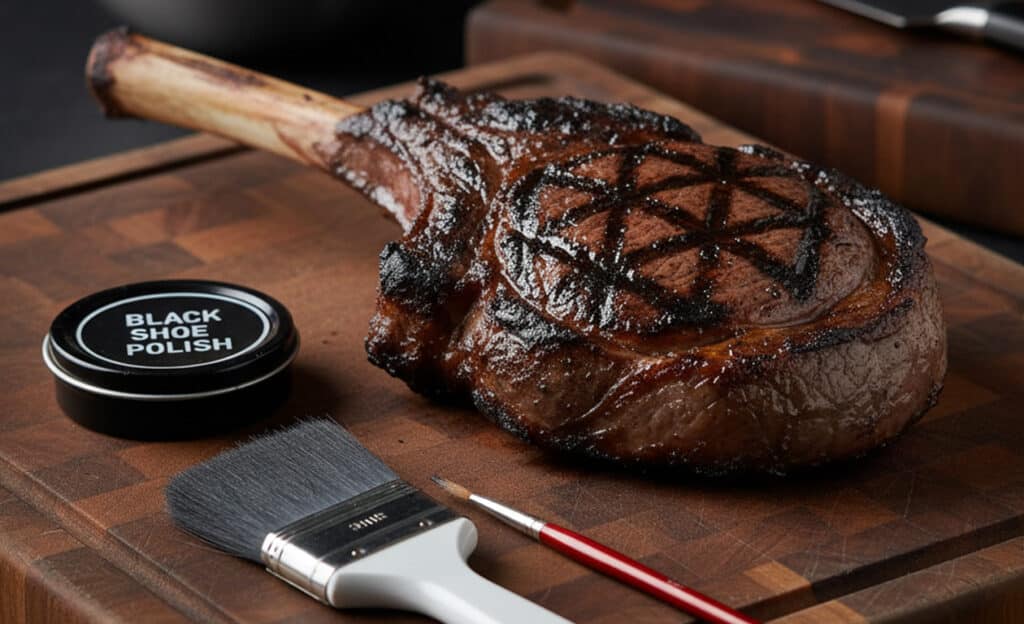
Black Shoe Polish in Steaks
For a restaurant or a steak house advertisement, the steaks always appear grilled to perfection. You can tell this because they're pink and juicy on the inside with distinct grill marks on the outside. Advertisers make sure that what you see on TV is as appetizing as possible and they do it in one of the least appetizing ways imaginable. The steaks used in these ads are cooked in an oven or on a flat grill and then the grill marks are painted on with shoe or boot polish that wouldn't exactly be a tasty steak but it sure looks good on camera.
4. Shaving cream used instead of Whipped cream
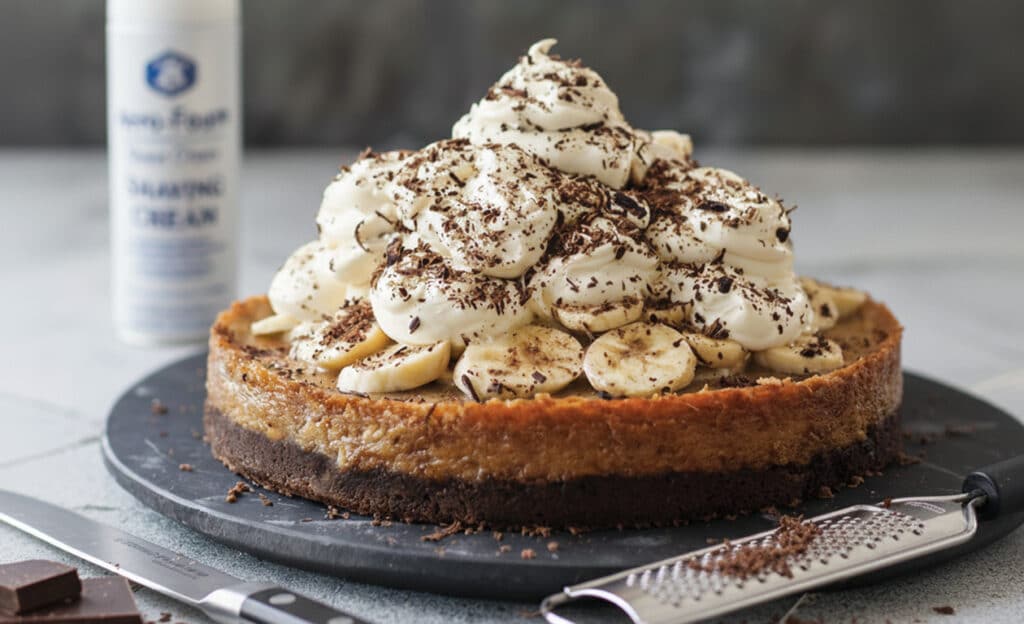
Shaving cream used instead of Whipped cream
Whipped cream is as difficult to work with as ice cream. Using whipped cream in an advertisement that doesn't have a consistent thickness tends to get running and will begin melting under hot lights in mere seconds. A product that looks identical to whipped cream but doesn't have these problems is SHAVING CREAM. Every ad you've ever seen featuring a milkshake parfait or slice of pie with a dollop of whipped cream on top didn't actually use whipped cream at all. Shaving cream holds up for much longer, doesn't melt, and is easy to sculpt in shape in whatever way the photographer wishes just like with mashed potatoes.
5. Wax used in sauces
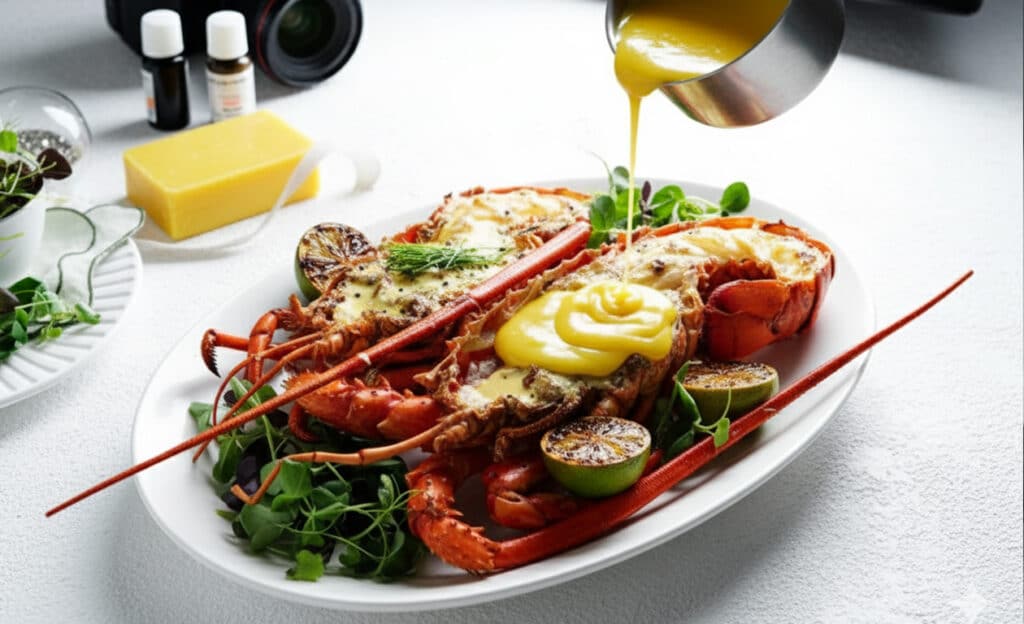
Wax used in sauces
One thing that is difficult to convey in photography is consistency and this presents a big problem if you have to photograph sauces. At the correct consistency, sauces tend to look thin and watered-down on camera and can also appear dull or lacking in color. Some sauces can also separate over the course of a long shoot. Photographers have found a simple addition that solves all of these problems at once that is wax. Red wax for example can make the color of a red sauce pop while making it appear to have the desired robust consistency on camera. Different colors can be used to tweak the on-camera appearance and the wax will keep the sauce from separating over the length of the shoot. Wax can also be used to thicken a sauce up enough to get those pouring shots which can be nearly impossible to achieve otherwise.
6. Cardboard used in layers of cakes
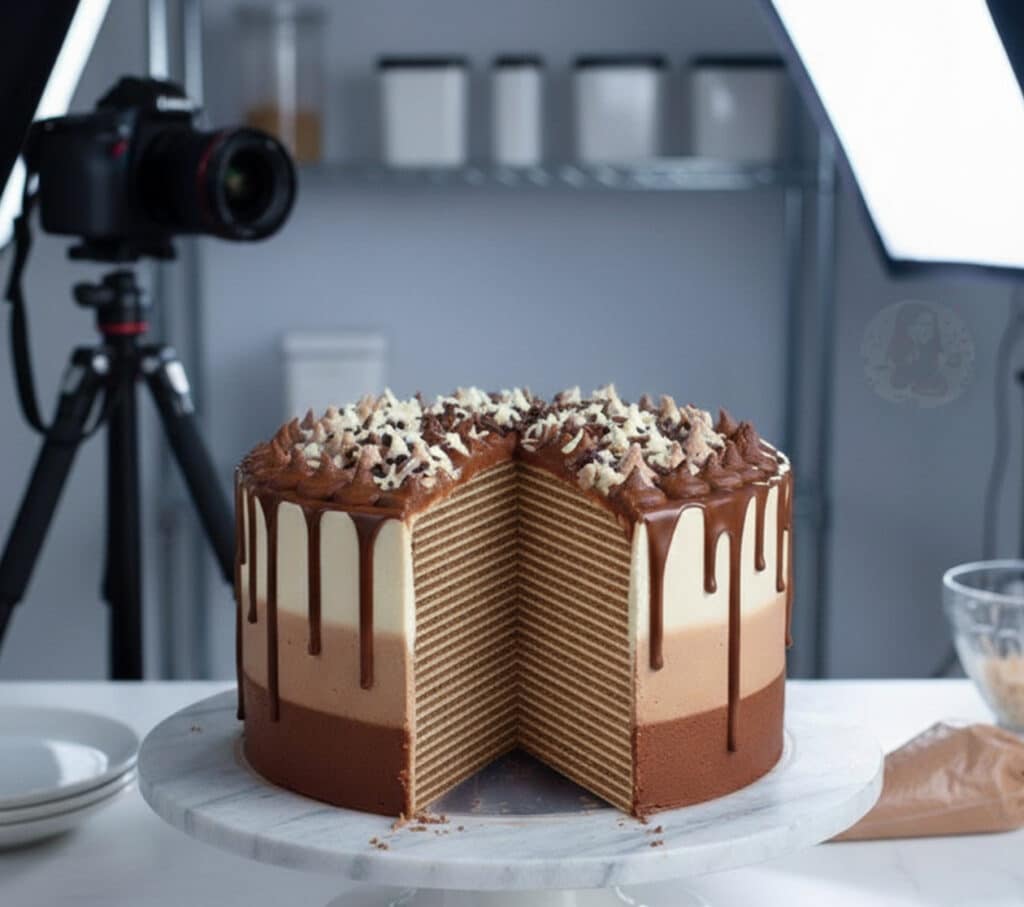
Cardboard used in layers of cakes
Cardboard is second to mashed potatoes as the MVP of add photography. Whenever you see a shot of a slice of a layer cake with a perfectly even distribution of cake and frosting, you can bet that there are a couple of extra layers. Photographers will insert pieces of cardboard in between the layers of the cake. Then pipe the frosting onto the cardboard. This helps ensure that there are no crumbs on the frosting which is unavoidable when simply cutting a piece of cake and the frosting looks perfectly uniform.
7. Engine oil and fabric protector in pancakes
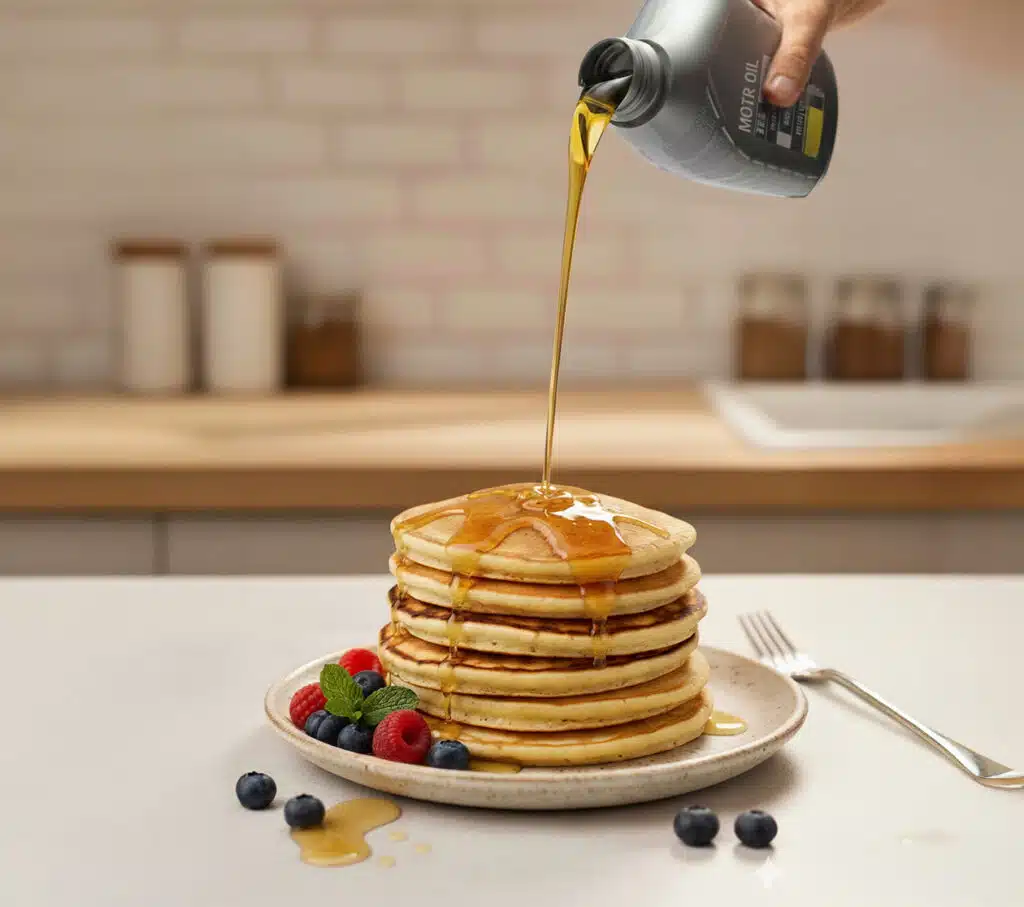
Engine oil and fabric protector in pancakes
A fluffy stack of pancakes with warm maple syrup is a great way to start the morning and advertisers know that. The problem with getting that view on camera is that those breakfast items are quite porous – so the syrup just seeps right in. The solution to this problem is by coating the pancakes with a layer of fabric protectors. This keeps them from being too absorbent but syrup can heat up and become runny under lights and doesn’t always photograph well. Thus, using motor oil, the condiment just glistens on top making it more appealing to the targeted audience.
8. Deodorant used in Fruit advertisements
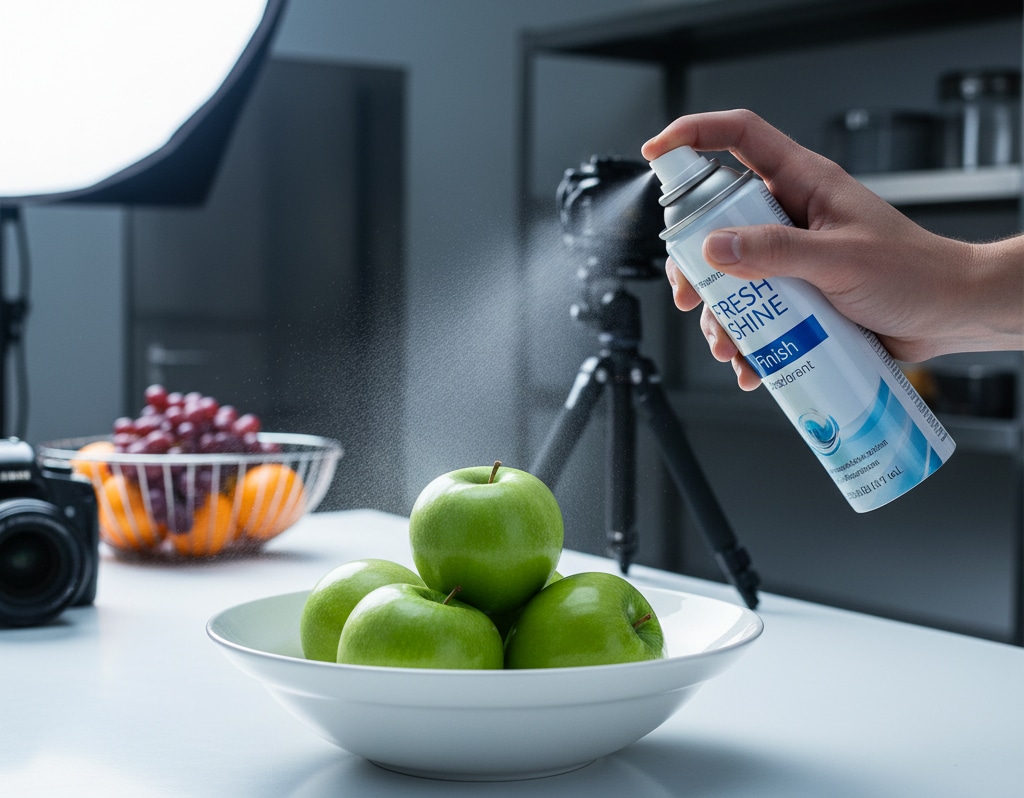
Deodorant used in Fruit Advertisements
Food Photographers have discovered another trick to make fruit really pop in advertisements. When shooting food advertisements, fruits are often sprayed with deodorant to give them a shiny, fresh look that appeals to consumers. Similarly, vegetables are also treated with sprays like deodorant or a water-glycerin solution to enhance their appearance and make them look more vibrant and appetizing in photographs. If you’re a little put off by that wax coating, you can at least keep in mind that wax is edible and won’t harm you. Spray deodorant, on the other hand, should never come anywhere near food unless it’s starring in a commercial shoot. Photographers often spray down a coating of spray deodorant on the apple, grapes, pears, or other similar fruits to give them that ultra-shiny look that we associate with being natural.
9. Red Lipstick to Make the Perfect Strawberries
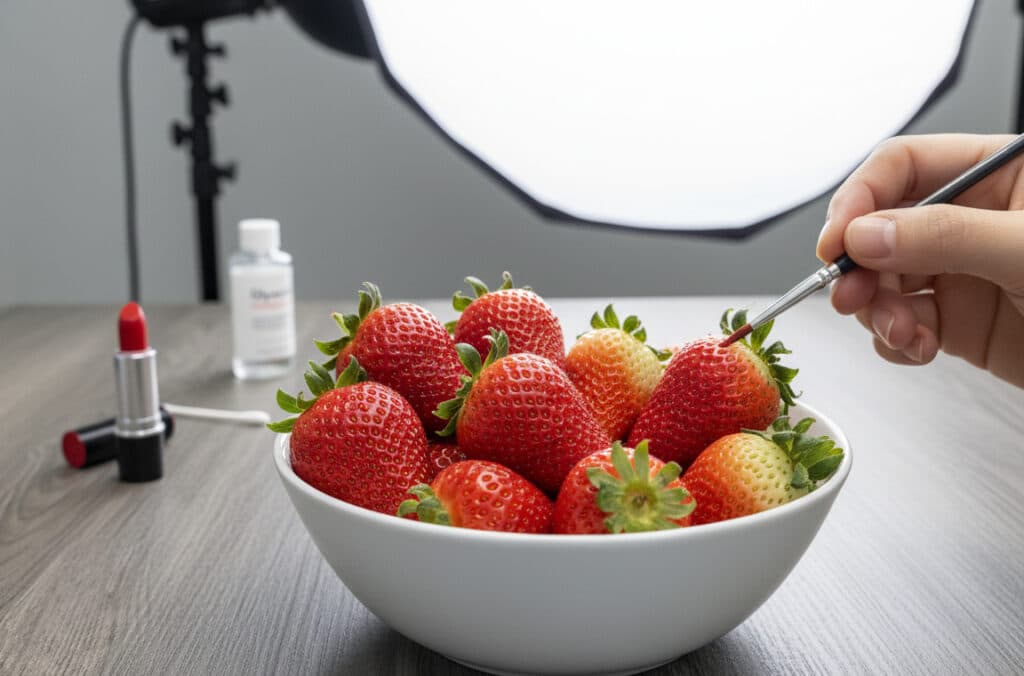
Red Lipstick to Make the Perfect Strawberries
Food stylists sometimes use red lipstick to restore the deep red of strawberries, cover pale patches near the seeds, and add subtle shine. The fruit reads as fresher and sweeter in close-ups, especially under bright lights that can wash out natural color. Food stylists dab a tiny amount with a fine brush or cotton swab, then blend toward the edges so it looks natural, not painted. For extra “freshness,” they mist a light glycerin-water mix to create tiny dewdrops. The berry is treated as a prop, not eaten after the shoot.
10. Acrylic Ice Cubes instead of Real Ice
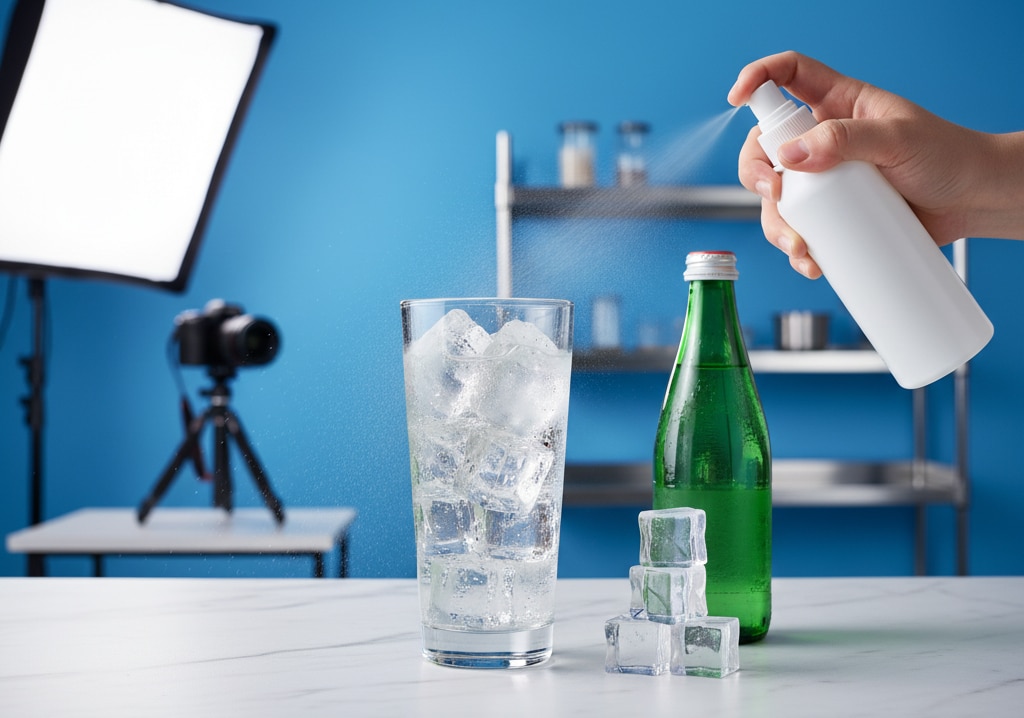
Acrylic Ice Cubes instead of Real Ice
Real ice melts quickly under studio lighting, causing cloudy liquid, floating labels, and condensation that looks messy rather than refreshing. Food stylists often use acrylic or resin ice cubes to control the look of the drink. In advertising for drinks and soft drinks, fake ice is commonly used to maintain the visual appeal of beverages and prevent melting during long shoots. These cubes stay crystal clear and perfectly shaped for the entire shoot. They can be positioned precisely to frame a logo or improve the light passing through the beverage. Stylists also spray a glycerin and water mix on the exterior of the glass to create long lasting condensation droplets that signal cold, crisp, and refreshing.
11. Heatless Steam created with Hidden Cotton Balls
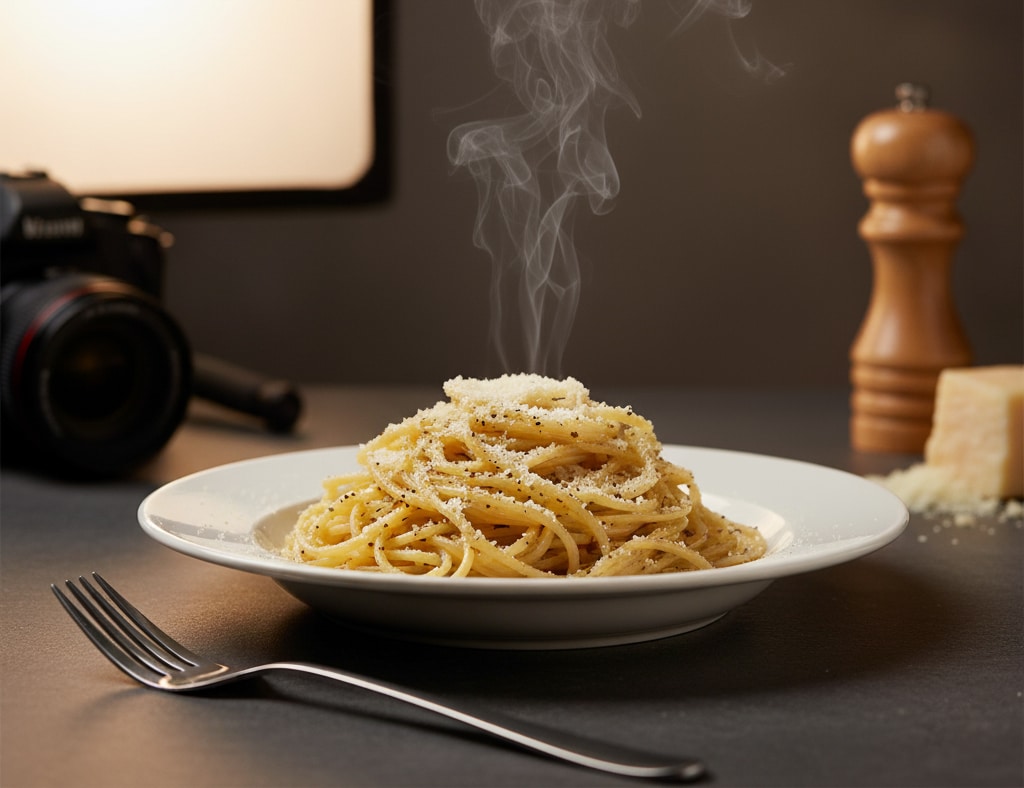
Heatless Steam created with Hidden Cotton Balls
Steam signals warmth, comfort, and fresh cooking, yet real steam vanishes almost instantly under studio lights. Food stylists create long lasting steam by placing small, damp cotton pieces inside or just behind the food. When gently warmed, the cotton releases a steady flow of vapor that can be shaped with reflectors or a tiny fan to achieve the perfect “just served” look. This technique is commonly used in advertisements to make hot food appear freshly cooked, enhancing its visual appeal.
12. Seared Meats looks Juicier on Camera
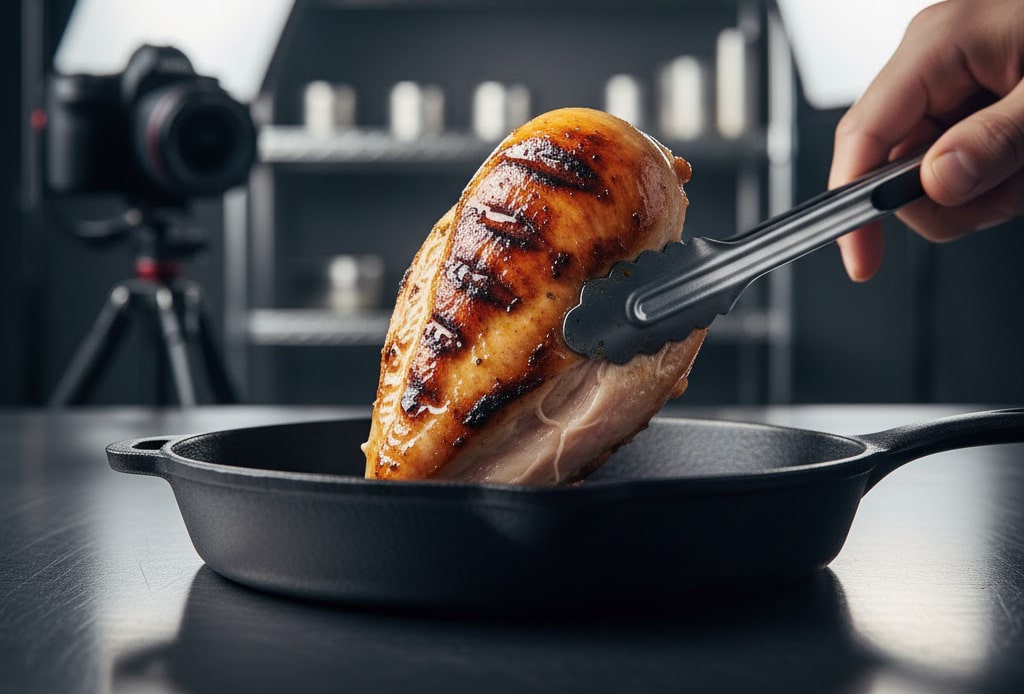
Seared Meats looks Juicier on Camera
Meat often looks smaller and drier once fully cooked, especially under studio lights. To keep steaks, burgers, and chicken breasts looking thick and moist, food stylists cook them only briefly. A quick sear adds rich colour and browning on the outside while the inside remains mostly uncooked. This preserves height and juiciness, making the protein appear fresh, tender, and full of flavour. These visual cues not only make the meat look juicier, but also suggest a more delicious taste to viewers.
13. Burger Food Styling – Engineering the Perfect Burger Crave Shot
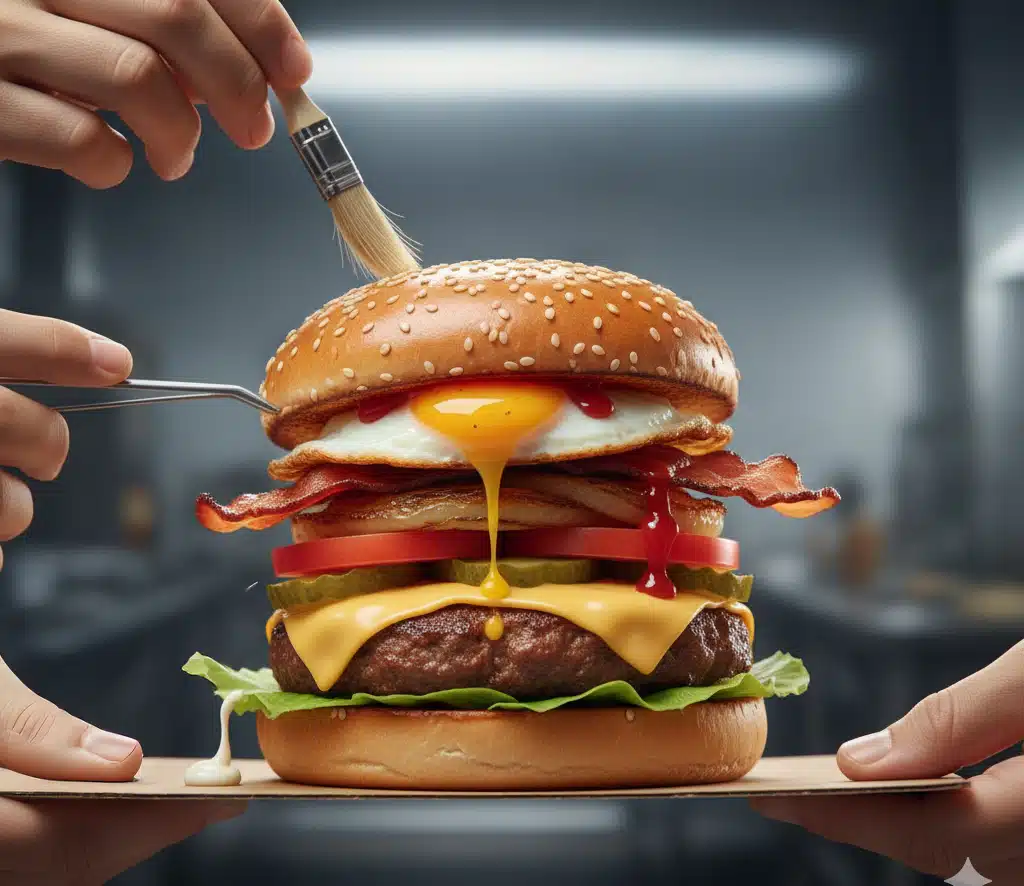
Burger Food Styling – Engineering the Perfect Burger Crave Shot
Burgers are the poster child of food advertising. They appear in TV commercials, restaurant menu boards, digital banners, supermarket promotions and even in quick service restaurant windows. However, a real burger constructed on a production line rarely looks anything like the towering, mouthwatering icon you see in marketing. Under studio conditions, buns compress, patties shrink, lettuce wilts and sauces slide into places they should not be.
To make burgers look irresistible, food stylists transform them into meticulously built hero models designed to spark appetite at first glance. Every ingredient is selected, shaped and placed for maximum visual impact.
- Bottom bun support: a small piece of cardboard keeps the base level and adds lift
- Patty prep: barely cooked so it stays thick, then brushed with oil for a glossy, juicy sheen
- Cheese treatment: gently softened with a heat gun so it melts with a natural fold, not a collapse
- Lettuce selection: only ruffled outer leaves are used to add height and texture around the edges
- Tomato control: slices are cut to a consistent thickness for bright, even colour contrast
- Sauce placement: applied with a syringe so drips land exactly where they look delicious
- Ingredient shaping: tweezers adjust every element to show the best possible angle
- Seed perfection: sesame seeds are rotated or even glued into place if needed
- Hidden support: a toothpick or skewer holds the stack firmly so it reads tall on camera
- Hero angle: the burger is rotated so its best side faces the lens, even if the back looks chaotic
Throughout the shoot, stylists constantly maintain structure, add small gloss touches, or swap out components the moment they lose vitality.
Conclusion
In conclusion, food advertising is as much about creativity and illusion as it is about the food itself. The tricks used by food stylists and photographers—whether it’s swapping mashed potatoes for ice cream, using shaving cream instead of whipped cream, or employing a host of other clever techniques—are all designed to make food look its absolute best in advertising. These methods help food products stand out in a crowded market, enticing consumers and shaping our perceptions of what delicious food should look like. While the foods we see in ads may not always match what we get in real life, the artistry behind food advertising continues to set the standard for visual appeal and consumer desire.
Scaling Your Food Advertising to Reach Grocery Buyers
Gourmet Ads works with food advertising brands to ramp up their food advertising campaigns. Since 2008, we have helped hundreds of food advertising companies to reach their audience through different food advertisement examples and experienced techniques. Many food advertising companies have achieved their goals using our programmatic or managed services.



